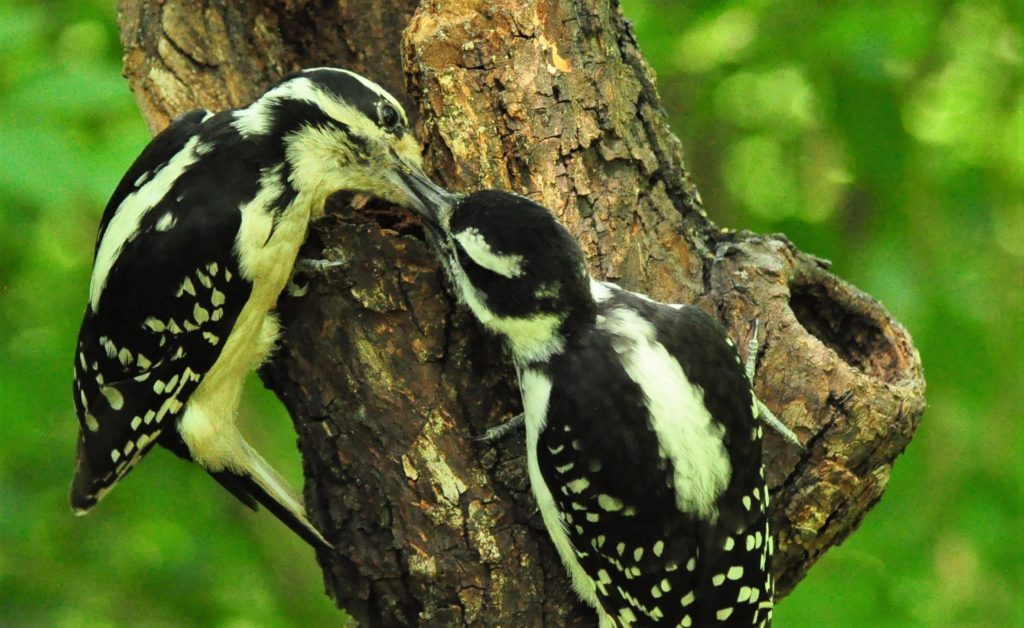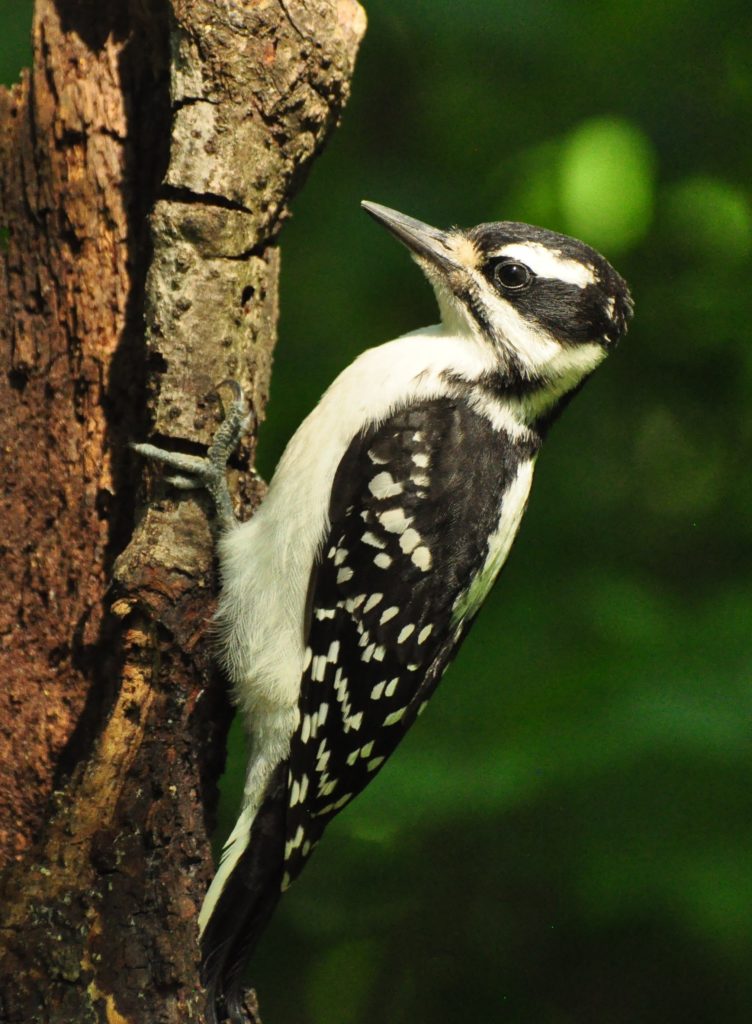Photography courtesy of Lowell Washburn, all rights reserved.

While photographing an energized gang of scurrying chipmunks at the abandoned woodpile, I couldn’t help but notice an excessive amount of activity on the part of a nearby pair of hairy woodpeckers. I soon discovered the reason for the commotion. The woodpeckers’ nest — containing two young — was in the process of fledging.

Taking full advantage of the event, I began slowly moving my portable blind, an inch at a time, until I was in good position. During the next couple of hours, I enjoyed a series of more or less continual observations as both adults interacted with their fledgling nestlings. Following their parents from branch to branch and tree to tree, the youngsters exhibited none of the hesitancy or clumsiness displayed by the fledged young of many species. By contrast, they acted like they’d been flying around the woods for weeks. Another notable difference was the complete lack of vocalizations on the part of the young. Although the begging fledglings frequently elevated their crown and neck feathers and quivered their wings in the familiar “stunned moth” display typical of baby birds, they never once uttered a sound — or at least none that I could discern.


 Tom Cope
Tom Cope Sue Wilkinson
Sue Wilkinson Susan Judkins Josten
Susan Judkins Josten Rudi Roeslein
Rudi Roeslein Elyssa McFarland
Elyssa McFarland Mark Langgin
Mark Langgin Adam Janke
Adam Janke Joe Henry
Joe Henry Kristin Ashenbrenner
Kristin Ashenbrenner Joe Wilkinson
Joe Wilkinson Dr. Tammy Mildenstein
Dr. Tammy Mildenstein Sean McMahon
Sean McMahon